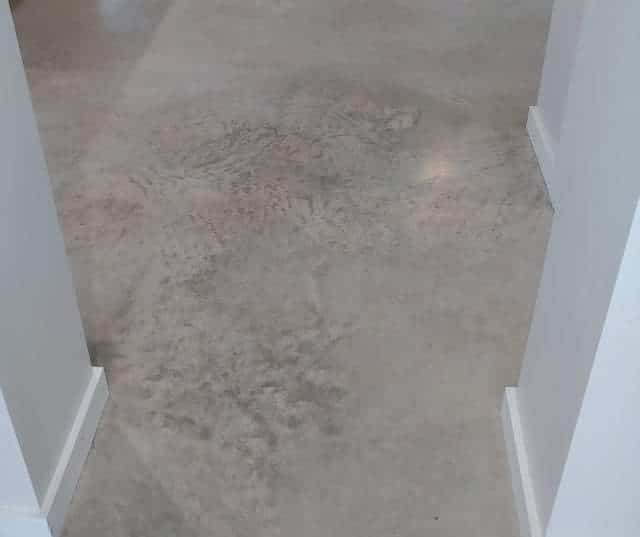How to Polish Concrete Floors: The Complete Guide
If you're looking for a beautiful and durable flooring option, polished concrete may be the perfect choice for you. Polished concrete is a type of concrete that has been treated with a sealant and grinding compound to give it a high-gloss finish. This makes it resistant to staining, fading, and cracking, and also gives it a luxurious appearance. In this guide, we will cover everything you need to know to turn your plain concrete foundation into a beautiful floor:
- What polished concrete is
- The advantages of concrete polishing
- The different concrete polishing finishes
- The concrete polishing process
- Maintaining your polished concrete floor
What is Concrete Polishing?
Concrete polishing is the process of transforming a plain concrete floor into a beautiful, high-gloss finish that is resistant to staining, fading, and cracking. The process begins with the application of a sealant to the concrete. This helps to protect the concrete from wear and tear. Once the sealant has been applied, a grinding compound is used to smooth out the surface of the concrete. This leaves behind a glossy, polished finish.
What are the Advantages of Polished Concrete?
There are many benefits to choosing polished concrete, whether for your home or business:
- Durable: When properly sealed and maintained, polished concrete can last for years without showing signs of wear and tear.
- Low Maintenance: Polished concrete is easy to clean and does not require regular waxing or polishing.
- Stain-Resistant: The smooth, non-porous surface of polished concrete resists staining from spills and dirt.
- Fade-Resistant: The sealant used in the polishing process protects the concrete from fading due to sunlight and UV exposure.
- Crack-Resistant: The grinding process fills in any cracks or imperfections in the concrete, making it more resistant to cracking over time.
The Different Types of Polished Concrete Finishes
There are three main types of polished concrete finishes: matte, semi-gloss, and high-gloss. The type of finish you choose will depend on your personal preferences and the level of traffic in the area where the concrete will be used.
- Matte: A matte finish has a subtle sheen and is perfect for areas that do not see a lot of foot traffic, such as bedrooms or living rooms.
- Semi-Gloss: A semi-gloss finish has a more pronounced sheen and is ideal for areas that see moderate foot traffic, such as offices or hallways.
- High-Gloss: A high-gloss finish has a shiny, mirror-like appearance and is best suited for high-traffic areas, such as kitchens or bathrooms.

The Concrete Polishing Process
The concrete polishing process begins with the application of a sealant to the concrete. This helps to protect the concrete from wear and tear. Once the sealant has been applied, a grinding compound is used to smooth out the surface of the concrete. Lastly, a final polish is applied to the concrete to give it a high-gloss finish.
Concrete Sealant
The first step in the concrete polishing process is to apply a sealant to the concrete. There are two main types of concrete sealants: solvent-based and water-based. Solvent-based sealants are made from petroleum products and have a strong odor. Use solvent-based sealants with care, as they are toxic if inhaled. Water-based sealants, on the other hand, are made from renewable resources and are much safer to use. However, they are not as effective at sealing concrete as solvent-based sealants.
Grinding Compound
After the sealant has been applied, a grinding compound is used to smooth out the surface of the concrete.
There are two main types of grinding compounds: diamond-tipped and abrasive. Diamond-tipped grinding compounds are more expensive but will result in a smoother, more polished finish. Abrasive grinding compounds are less expensive but will leave behind a rougher finish.
Final Polish
Once the concrete has been ground down, a final polish is applied to give it a high-gloss finish. The type of polish you choose will depend on the level of traffic in the area where the concrete will be used (see above section on concrete finishes).
Maintaining Your Polished Concrete Floor
One of the best things about polished concrete is how simple it is to care for. To keep your polished concrete floor looking its best, it is important to sweep or vacuum regularly to remove dirt and dust. For more stubborn stains, you can use a mild detergent and mop with a soft, microfiber mop. Avoid using harsh chemicals or scrubbing pads, as these can damage the sealant and cause the concrete to lose its shine.
If you are looking for a durable, low-maintenance flooring option, polished concrete is a great choice. With its stain-resistant, fade-resistant, and crack-resistant properties, polished concrete is built to last. The different types of polished concrete finishes allow you to choose the perfect look for your home or business. The simple care and maintenance of polished concrete makes it a worry-free flooring option for busy families and businesses alike.
Whether you are looking to update the floors in your home or business, polished concrete is a great option to consider. With its many benefits, it is easy to see why polished concrete has become such a popular choice in recent years. If you have any questions about polished concrete or would like a free quote, please contact us today. We would be happy to help you create the perfect floor for your needs.
PS: If you don't think polished concrete is for you, a stained concrete or epoxy concrete floor might be a better fit.
